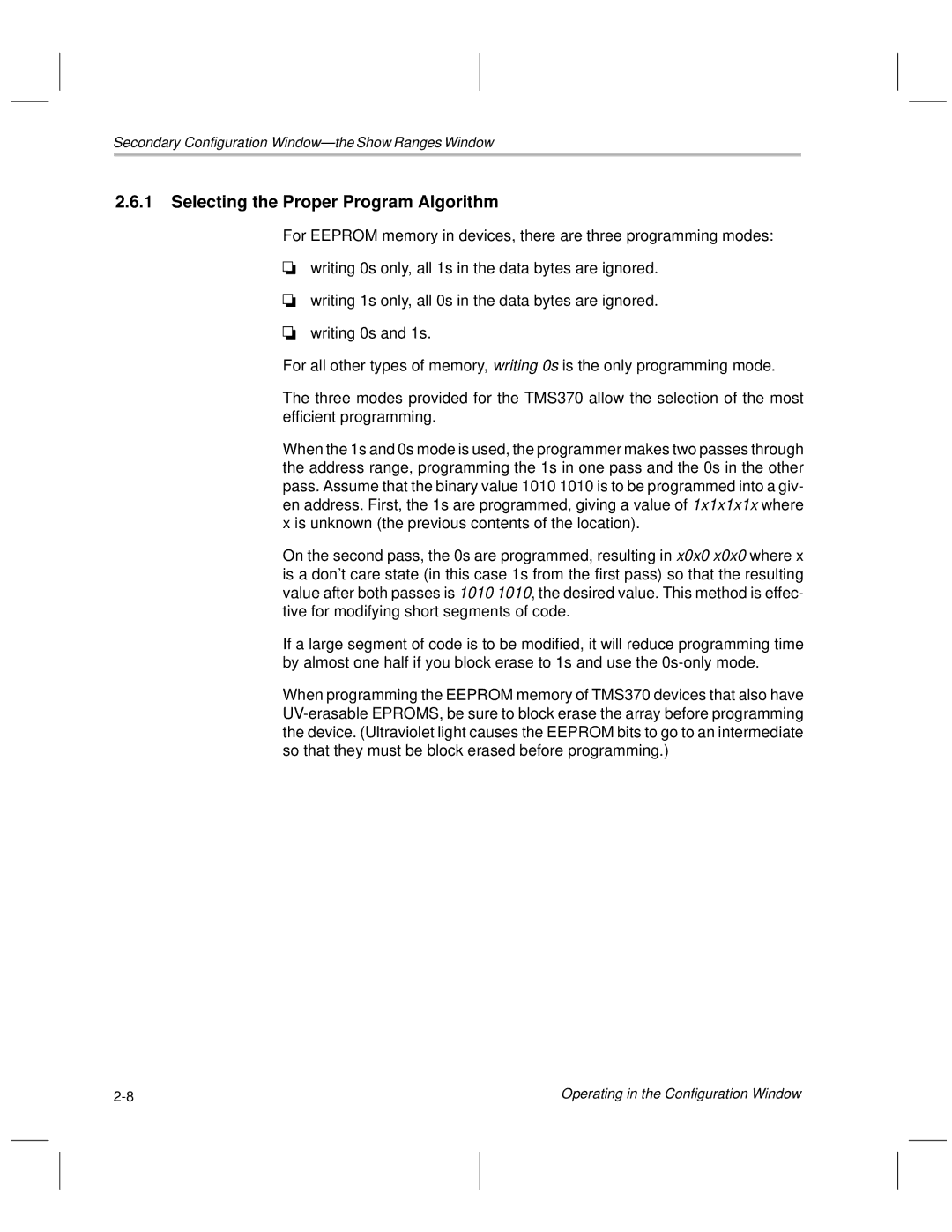
Secondary Configuration WindowÐthe Show Ranges Window
2.6.1Selecting the Proper Program Algorithm
For EEPROM memory in devices, there are three programming modes:
writing 0s only, all 1s in the data bytes are ignored.
writing 1s only, all 0s in the data bytes are ignored.
writing 0s and 1s.
For all other types of memory, writing 0s is the only programming mode.
The three modes provided for the TMS370 allow the selection of the most efficient programming.
When the 1s and 0s mode is used, the programmer makes two passes through the address range, programming the 1s in one pass and the 0s in the other pass. Assume that the binary value 1010 1010 is to be programmed into a giv- en address. First, the 1s are programmed, giving a value of 1x1x1x1x where x is unknown (the previous contents of the location).
On the second pass, the 0s are programmed, resulting in x0x0 x0x0 where x is a don't care state (in this case 1s from the first pass) so that the resulting value after both passes is 1010 1010, the desired value. This method is effec- tive for modifying short segments of code.
If a large segment of code is to be modified, it will reduce programming time by almost one half if you block erase to 1s and use the
When programming the EEPROM memory of TMS370 devices that also have
Operating in the Configuration Window |
